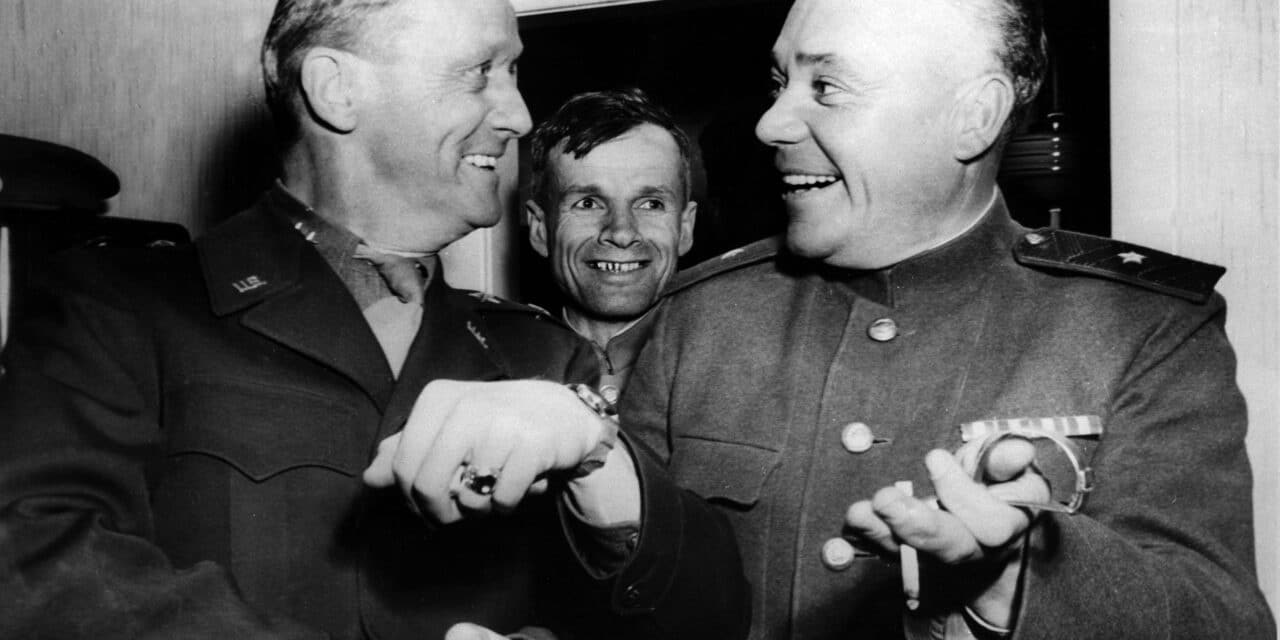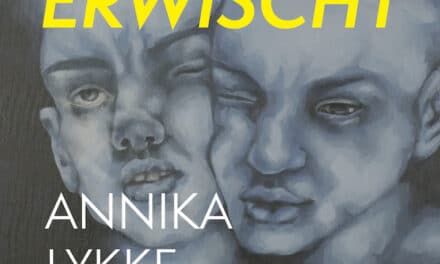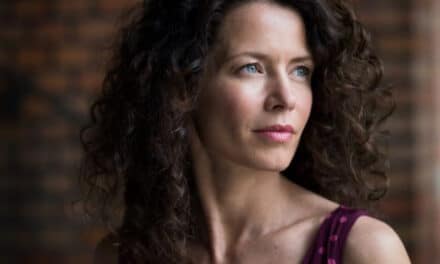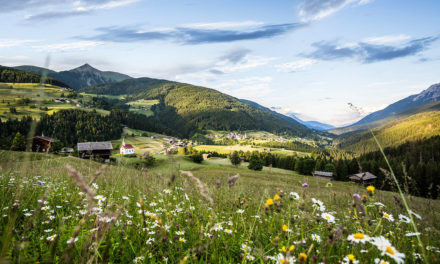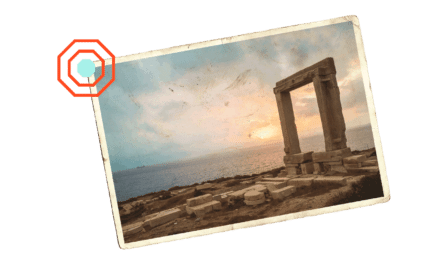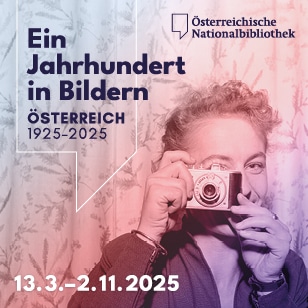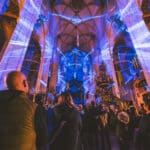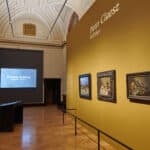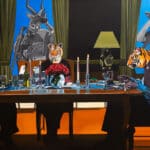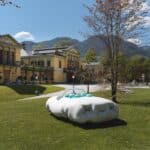Im Gedenken an das Ende des Zweiten Weltkrieges vor 70 Jahren wurde 2015 in Erlauf ein neues Museum eröffnet: ERLAUF ERINNERT – Museum der Friedensgemeinde Erlauf vereint Zeitgeschichte, Erinnerungskultur und Gegenwartskunst. Dieses einzigartige Museum behandelt die Geschichte von Nationalsozialismus und Krieg in Österreich und zeigt erstmals die Entwicklung von Erinnerungskultur in Verbindung mit künstlerischen Positionen.
Ein symbolträchtiger Handschlag machte Erlauf im niederösterreichischen Bezirk Melk über Nacht zu einem historisch besonderen Ort. Am 8. Mai 1945 traf dort der sowjetische General Dmitri Dritschkin auf den US-amerikanischen General Stanley Reinhart. Der Zweite Weltkrieg in Europa war beendet. Der Handschlag der Generäle zu Mitternacht löste in Erlauf eine besondere Form der Gedenk- und Erinnerungskultur aus, die dort seit den 1960er Jahren gelebt wird. Kein anderer Ort vergleichbarer Größe im deutschsprachigen Raum hat sich derart bewusst und über eine ähnlich lange Zeitspanne hinweg mit den Themen Frieden, Erinnerung und Kunst auseinandergesetzt. So wurden 1995 die Friedensdenkmäler von Jenny Holzer und Oleg Komov umgesetzt und in der Folge eine Reihe von temporären Kunstprojekten im öffentlichen Raum wie „Erlauf erinnert sich“ (2000,2002) oder das Musikprojekt „AMF – Allied Musical Forces“ von Konrad Rennert (2006) realisiert.
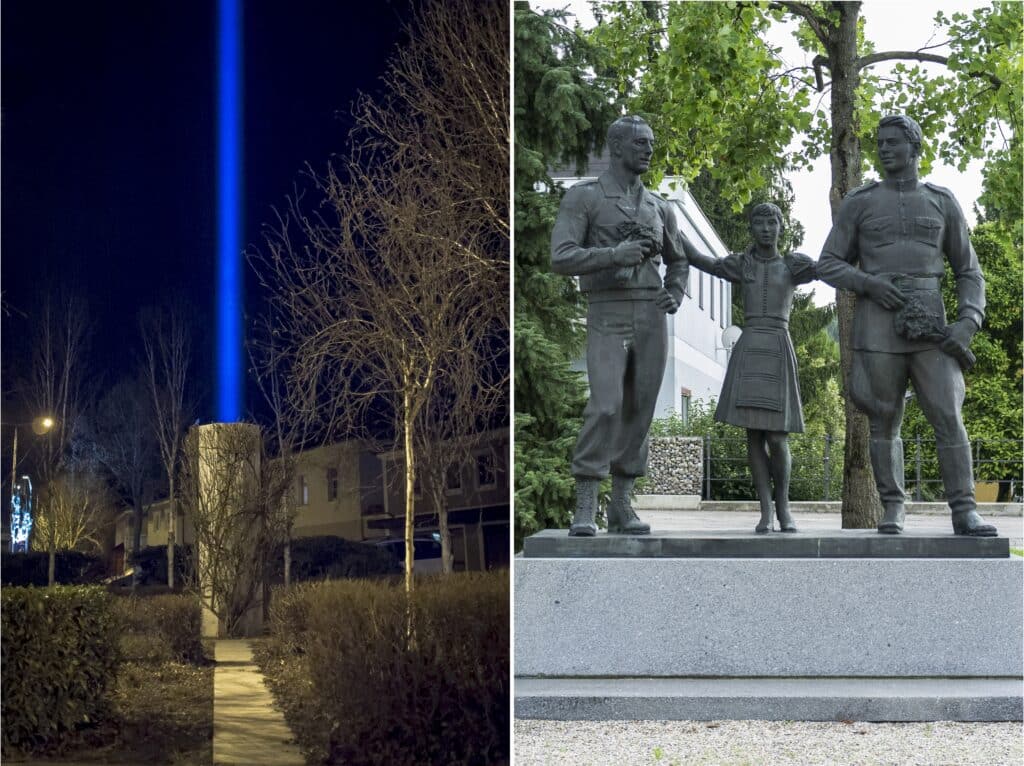
Friedensdenkmal Erlauf von Jenny Holzer © Christian Wachter und Friedensdenkmal von Oleg Komov, 1995 © Remigio Gazzari
Mit ERLAUF ERINNERT. Museum der Friedensgemeinde Erlauf wurde ein lebendiger Ort der übergreifenden Auseinandersetzung mit Zeitgeschichte, Erinnerungskultur und Gegenwartskunst geschaffen. In einer 250 Quadratmeter großen Dauerausstellung werden – 70 Jahre nach Kriegsende und ausgehend von dem historischen Ereignis 1945 – die Vorgänge in Ort und Region, die Geschichte von Totalitarismus und Vertreibung genauso wie die Brüche und Kontinuitäten der österreichischen Erinnerungskultur der Zweiten Republik in Verbindung mit künstlerischen Arbeiten gezeigt. Im Archiv der Kunst und im Filmraum lassen sich alle in Erlauf verwirklichten Kunst- und Filmprojekte erschließen. Eine Sonderausstellungsfläche ist temporären Ausstellungen, Vorträgen, Lesungen, Filmvorführungen und Vermittlungsprojekten gewidmet. Die künstlerische Auseinandersetzung mit der Thematik wird in einem temporär bespielbaren Teil der Ausstellung fortgesetzt, um Geschichte mit Gegenwart zu verbinden.
Das Museum ERLAUF ERINNERT ist ein Kooperationsprojekt der Marktgemeinde Erlauf mit der Abteilung Kunst und Kultur des Landes Niederösterreich.
aktuelle Ausstellung: Sabine Watschka: Unscheinbare Architektur
Eine scheinbar unbedeutende Bauruine in Krummnußbaum ist Ausgangspunkt der Arbeit von Sabine Watschka. Bei der Ruine handelt es sich um die Überreste eines Pumphauses aus der NS-Zeit. Es war Teil eines geplanten und teilweise erbauten Tanklagers mit Warenumschlagmöglichkeit auf Schiff und Bahn. Geführt wurde dieses Tanklager von der WIFO (Wirtschaftliche Forschungsgesellschaft GmbH), einer Tarnfirma der Nationalsozialisten, die unter anderem für die Mineralölversorgung der Wehrmacht zuständig war. Von dem Lagerkomplex sind neben dem Pumphaus noch ein Hafenbecken in mittlerweile abgeänderter Form, zwei Brückenpfeiler, eine Betonstraße, Fundamentreste, die vermutlich von einer Materialseilbahn stammen, sowie zwei Baracken in Annastift erhalten.
Von den beiden Baracken wurde die südlichere renoviert und bei der nördlicheren stammt wahrscheinlich der Keller aus der NS-Zeit. Die Baracken in Annastift dienten unter anderem als Unterkunft für Arbeiterinnen und Arbeiter, Zwangsarbeiterinnen und Zwangsarbeiter, Kriegsgefangene und „volksdeutsche Umsiedler” Für den Warenumschlag auf die Bahn war eine Erweiterung des Bahnhofes Krummnußbaum, ein Öl- und Benzinbahnhof in Wallenbach und zeitweise die Einbindung des Bahnhofes Erlauf angedacht.
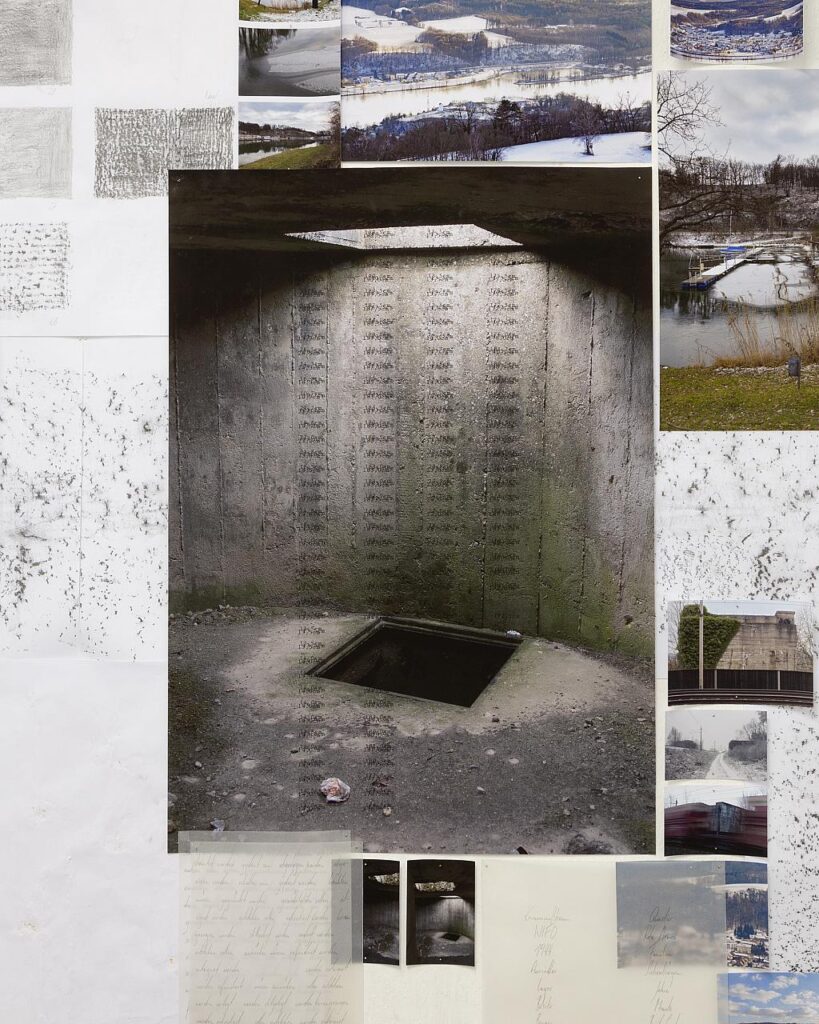
Ausstellungsansicht, Unscheinbare Architektur, Beitrag zu aus der Dunkelheit, Kunstuni Linz © Sabine Watschka
Die Künstlerin näherte sich den vorhandenen Bauobjekten in unterschiedlichen Ansätzen an, indem sie archäologische Arbeitsweisen adaptierte. So sind beispielsweise die Maße der Abdrücke, die die Schalung bei der Errichtung des runden Bauteils des Pumphauses hinterlassen hat, auf eine Fotografie des Pumphauses in Spalten übertragen worden, wodurch sich die pragmatische Form des Bauwerks und gleichermaßen die Vorgangsweisen des Regimes in den banalen Zahlenkolumnen widerspiegeln. Dem Prozess des Verfalls und damit auch Vergessens entgegentretend, schichtet die Künstlerin in ihrer Installation Fotografien, Frottagen, Abformungen, Ablagerungen und Fundstücke zum Lagerkomplex. Diese Schichtung versteht die Künstlerin als eine Art „Haut” der verstrichenen Zeit, welche auf die Vergangenheit verweist und für sich selbst spricht.
19. Oktober 2023 bis 19. Mai 2024
www.erlauferinnert.at
www.friedensgemeinde.at

